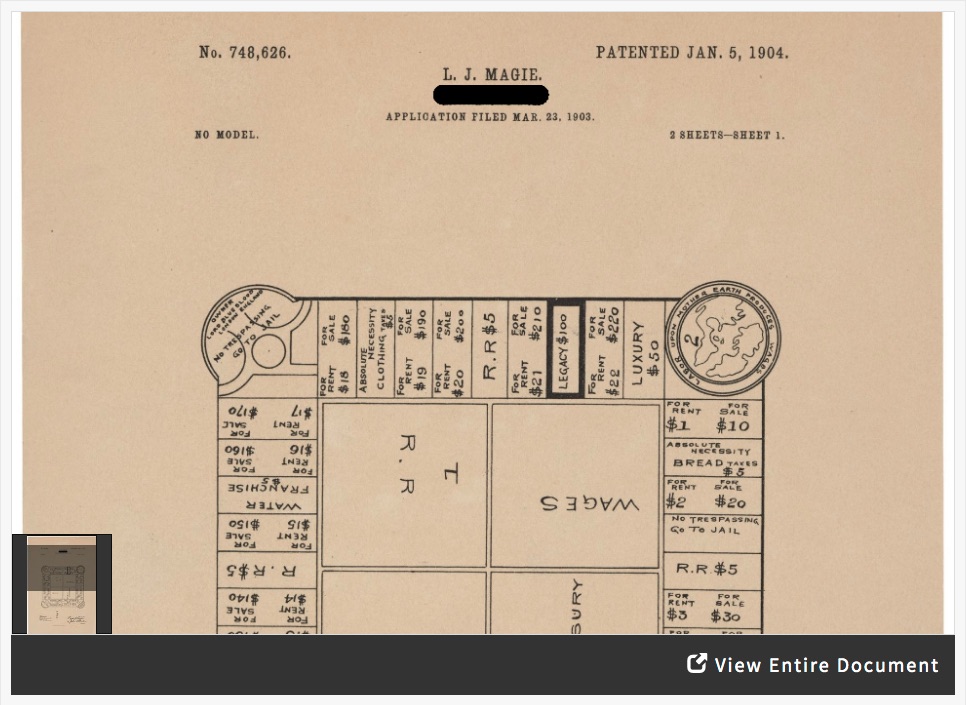Patent Analysis: Lizzie Magie's Board Game
Focusing on Details: White Out/Black Out

About this Activity
- Created by:National Archives Education Team
- Historical Era:The Emergence of Modern America (1890-1930)
- Thinking Skill:Historical Analysis & Interpretation
- Bloom's Taxonomy:Analyzing
- Grade Level:Upper Elementary
In this activity, students will analyze the patent drawing for Liz Magie's Game Board for the Landlord's Game, which was a forerunner for the popular board game Monopoly.




